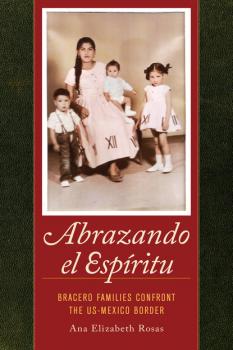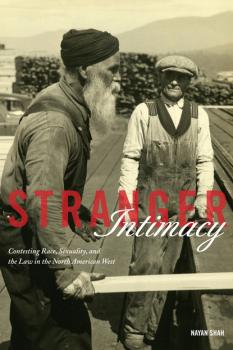ТОП просматриваемых книг сайта:
American Crossroads
Скачать книги из серии American CrossroadsАннотация
In the decades after the landmark <I>Brown v. Board of Education</I> Supreme Court decision, busing to achieve school desegregation became one of the nation’s most controversial civil rights issues. <I>Why Busing Failed</I> is the first book to examine the pitched battles over busing on a national scale, focusing on cities such as Boston, Chicago, New York, and Pontiac, Michigan. This groundbreaking book shows how school officials, politicians, the courts, and the media gave precedence to the desires of white parents who opposed school desegregation over the civil rights of black students.<BR />  <BR /> This broad and incisive history of busing features a cast of characters that includes national political figures such as then-president Richard Nixon, Chicago mayor Richard J. Daley, and antibusing advocate Louise Day Hicks, as well as some lesser-known activists on both sides of the issue—Boston civil rights leaders Ruth Batson and Ellen Jackson, who opposed segregated schools, and Pontiac housewife and antibusing activist Irene McCabe, black conservative Clay Smothers, and Florida governor Claude Kirk, all supporters of school segregation. <I>Why Busing Failed </I>shows how antibusing parents and politicians ultimately succeeded in preventing full public school desegregation.
Аннотация
First edition, Winner of the Arthur J. Viseltear Prize, American Public Health Association With an emphasis on the American West, Eugenic Nation explores the long and unsettled history of eugenics in the United States. This expanded second edition includes shocking details demonstrating that eugenics continues to inform institutional and reproductive injustice. Alexandra Minna Stern draws on recently uncovered historical records to reveal patterns of racial bias in California’s sterilization program and documents compelling individual experiences. With the addition of radically new and relevant research, this edition connects the eugenic past to the genomic present with attention to the ethical and social implications of emerging genetic technologies.
Аннотация
This beautifully written book, now in its second edition, tells the haunting saga of a quintessentially American family. In the late 1790s, Shoe Boots, a famed Cherokee warrior and successful farmer, acquired an African slave named Doll. Over the next thirty years, Shoe Boots and Doll lived together as master and slave and also as lifelong partners who, with their children and grandchildren, experienced key events in American history—including slavery, the Creek War, the founding of the Cherokee Nation and subsequent removal of Native Americans along the Trail of Tears, and the Civil War. This is the gripping story of their lives, in slavery and in freedom.<BR /><BR /> Meticulously crafted from historical and literary sources, <I>Ties That Bind</I> vividly portrays the members of the Shoeboots family. Doll emerges as an especially poignant character, whose life is mostly known through the records of things done to her—her purchase, her marriage, the loss of her children—but also through her moving petition to the federal government for the pension owed to her as Shoe Boots's widow. A sensitive rendition of the hard realities of black slavery within Native American nations, the book provides the fullest picture we have of the myriad complexities, ironies, and tensions among African Americans, Native Americans, and whites in the first half of the nineteenth century.<BR /><BR /> Updated with a new preface and an appendix of key primary sources, this remains an essential book for students of Native American history, African American history, and the history of race and ethnicity in the United States.
Аннотация
Beginning after World War I, Houston was transformed from a black-and-white frontier town into one of the most ethnically and racially diverse urban areas in the United States.<I> Houston Bound</I> draws on social and cultural history to show how, despite Anglo attempts to fix racial categories through Jim Crow laws, converging migrations—particularly those of Mexicans and Creoles—complicated ideas of blackness and whiteness and introduced different understandings about race. This migration history also uses music and sound to examine these racial complexities, tracing the emergence of Houston's blues and jazz scenes in the 1920s as well as the hybrid forms of these genres that arose when migrants forged shared social space and carved out new communities and politics.<BR /><BR /> This interdisciplinary book provides both an innovative historiography about migration and immigration in the twentieth century and a critical examination of a city located in the former Confederacy<I>.</I>
Аннотация
Structured to meet employers’ needs for low-wage farm workers, the well-known Bracero Program recruited thousands of Mexicans to perform physical labor in the United States between 1942 and 1964 in exchange for remittances sent back to Mexico. As partners and family members were dispersed across national borders, interpersonal relationships were transformed. The prolonged absences of Mexican workers, mostly men, forced women and children at home to inhabit new roles, create new identities, and cope with long-distance communication from fathers, brothers, and sons.<BR /><BR /> Drawing on an extraordinary range of sources, Ana Elizabeth Rosas uncovers a previously hidden history of transnational family life. Intimate and personal experiences are revealed to show how Mexican immigrants and their families were not passive victims but instead found ways to embrace the spirit <I>(abrazando el espíritu)</I> of making and implementing difficult decisions concerning their family situations—creating new forms of affection, gender roles, and economic survival strategies with long-term consequences.
Аннотация
This history of US-led international drug control provides new perspectives on the economic, ideological, and political foundations of a Cold War American empire. US officials assumed the helm of international drug control after World War II at a moment of unprecedented geopolitical influence embodied in the growing economic clout of its pharmaceutical industry.<BR /><BR /><I>We Sell Drugs</I> is a study grounded in the transnational geography and political economy of the coca-leaf and coca-derived commodities market stretching from Peru and Bolivia into the United States. More than a narrow biography of one famous plant and its equally famous derivative products—Coca-Cola and cocaine—this book situates these commodities within the larger landscape of drug production and consumption. Examining efforts to control the circuits through which coca traveled, Suzanna Reiss provides a geographic and legal basis for considering the historical construction of designations of legality and illegality.<BR /><BR /> The book also argues that the legal status of any given drug is largely premised on who grew, manufactured, distributed, and consumed it and not on the qualities of the drug itself. Drug control is a powerful tool for ordering international trade, national economies, and society’s habits and daily lives.<BR /><BR /> In a historical landscape animated by struggles over political economy, national autonomy, hegemony, and racial equality, <I>We Sell Drugs</I> insists on the socio-historical underpinnings of designations of legality to explore how drug control became a major weapon in asserting control of domestic and international affairs.
Информация о книге
Автор произведения Suzanna Reiss
Жанр Юриспруденция, право
Серия American Crossroads
Аннотация
In the late nineteenth century the borderlands between the United States, the British Empire in Canada, and the Asia-Pacific Rim emerged as a crossroads of the Pacific world. In <I>Pacific Connections</I>, Kornel Chang tells the dramatic stories of the laborers, merchants, smugglers, and activists who crossed these borders into the twentieth century, and the American and British empire-builders who countered them by hardening racial and national lines. But even as settler societies attempted to control the processes of imperial integration, their project fractured under its contradictions. Migrant workers and radical activists pursued a transnational politics through the very networks that made empire possible. Charting the U.S.-Canadian borderlands from above and below, Chang reveals the messiness of imperial formation and the struggles it spawned from multiple locations and through different actors across the Pacific world. <I>Pacific Connections </I>is the winner of the Outstanding Book in History award from the Association for Asian American Studies and is a finalist for the John Hope Franklin Book Prize from the American Studies Association.
Аннотация
American Bandstand, one of the most popular television shows ever, broadcast from Philadelphia in the late fifties, a time when that city had become a battleground for civil rights. Counter to host Dick Clark’s claims that he integrated American Bandstand, this book reveals how the first national television program directed at teens discriminated against black youth during its early years and how black teens and civil rights advocates protested this discrimination. Matthew F. Delmont brings together major themes in American history—civil rights, rock and roll, television, and the emergence of a youth culture—as he tells how white families around American Bandstand’s studio mobilized to maintain all-white neighborhoods and how local school officials reinforced segregation long after Brown vs. Board of Education. The Nicest Kids in Town powerfully illustrates how national issues and history have their roots in local situations, and how nostalgic representations of the past, like the musical film Hairspray, based on the American Bandstand era, can work as impediments to progress in the present.
Аннотация
This unique analysis of the rise of the juvenile justice system from the nineteenth to twentieth centuries uses one of the harshest states—California—as a case study for examining racism in the treatment of incarcerated young people of color. Using rich new untapped archives, <i>States of Delinquency</i> is the first book to explore the experiences of young Mexican Americans, African Americans, and ethnic Euro-Americans in California correctional facilities including Whittier State School for Boys and the Preston School of Industry. Miroslava Chávez-García examines the ideologies and practices used by state institutions as they began to replace families and communities in punishing youth, and explores the application of science and pseudo-scientific research in the disproportionate classification of youths of color as degenerate. She also shows how these boys and girls, and their families, resisted increasingly harsh treatment and various kinds of abuse, including sterilization.
Информация о книге
Автор произведения Miroslava Chavez-Garcia
Жанр Юриспруденция, право
Серия American Crossroads
Аннотация
In exploring an array of intimacies between global migrants Nayan Shah illuminates a stunning, transient world of heterogeneous social relations—dignified, collaborative, and illicit. At the same time he demonstrates how the United States and Canada, in collusion with each other, actively sought to exclude and dispossess nonwhite races. <i>Stranger Intimacy</i> reveals the intersections between capitalism, the state's treatment of immigrants, sexual citizenship, and racism in the first half of the twentieth century.










